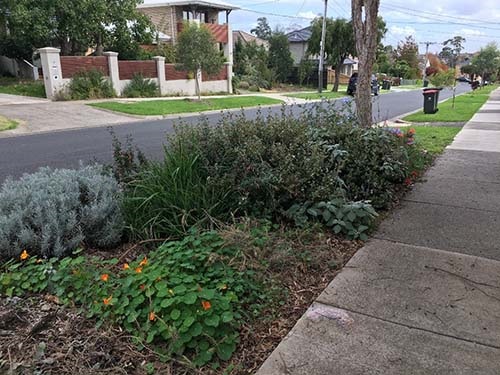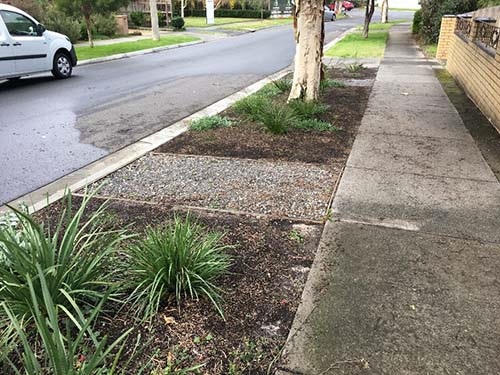Options for modifying a nature strip
Option 1: Replacing grass
The grass on a nature strip can be replaced without a permit from Council, but other modifications must go through the permit approval process. The best grasses for nature strips are indigenous or non-indigenous warm-season grasses, as they are more tolerant of drier conditions. Some indigenous examples include Weeping Grass and Kangaroo Grass.
Option 2: Approved Plantings
Property owners can mulch and plant nature strips, though this option may need more maintenance. It is best to use a natural, organic mulch around your plantings to create a good growing environment.
View our list of appropriate native and exotic species: Nature strips - suggested plants list(PDF, 2MB)

Option 3: Permeable Surfaces
Permeable materials such as granitic sand and mulch are useful ground coverings, as they let rainfall seep into the ground and require minimal maintenance other than occasional weeding. This option requires more material, labour and cost during installation. Excavation could be required to remove grass before installing the new surface.
A low garden edge should be installed to help prevent material being blown or washed away by the weather. Any garden edge used must match the levels of the adjacent nature strip area. Do not use edging next to the footpath or kerb, these will act as the edging. If it is found to be a tripping hazard, it will need to be removed. Any works must avoid damaging street trees and their root systems, and any underground services.
Note: Synthetic turf and hard paving, like concrete or bricks, cannot be used on nature strips as it stops water being absorbed into the ground. This increases flooding during high rainfall, increases surface temperatures on hot days and deprives street trees or other plants of water. It also impedes any necessary Council or other authority’s maintenance works on the nature strip.
